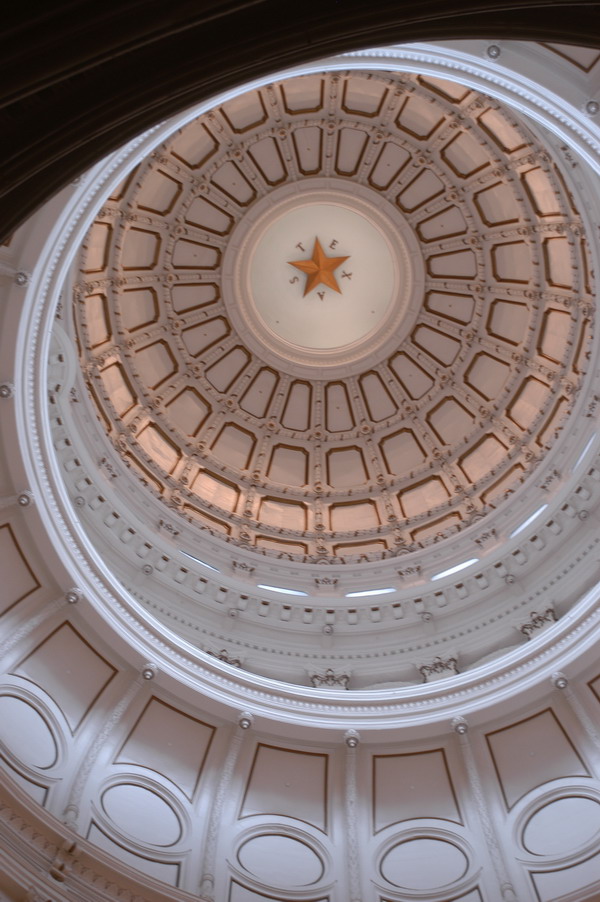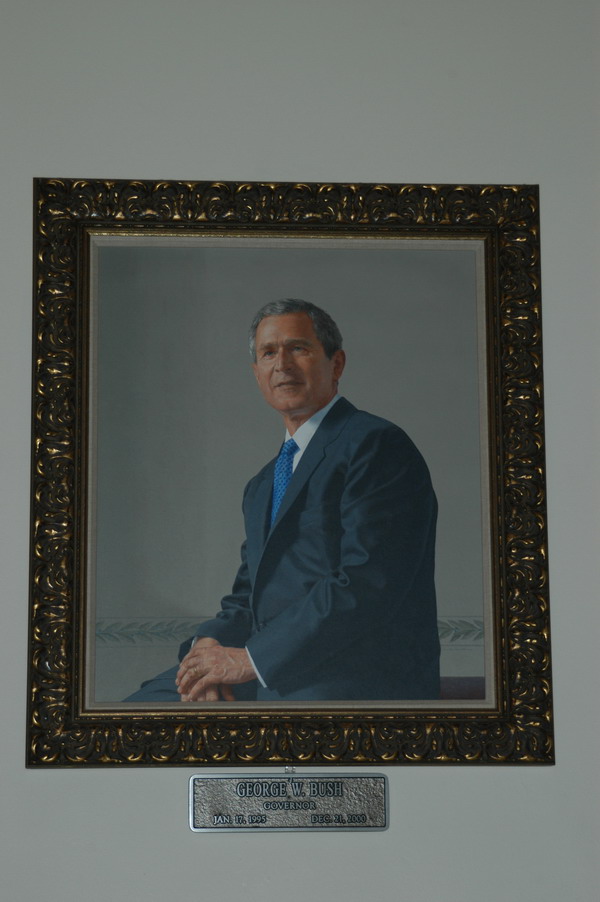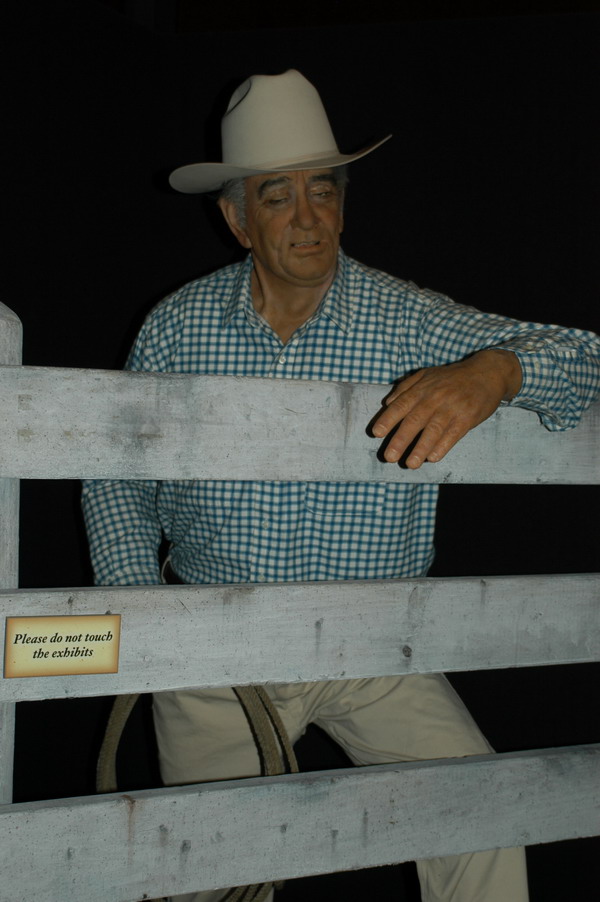|
There's more than one way to go batty, especially in Austin, a city that's
deep in the heart, and heat and humidity, of Texas.
It's a Capitol city, one that boasts the nation's largest domed statehouse.
And, because this is Texas, the capitol towers 311 feet, 14 feet taller
than
the U.S. Capital in Washington, D.C.
 |
 |
|
Austin's Statehouse
|
Looking Up to the Dome
|
Austin is also musical. Most evenings live music is played at more than
100
venues. It doesn't take more than a quick spin through downtown to see
club
after club, with many offering a surprising mix of musical possibilities,
from Texas swing to jazz to pop to country-western to rock 'n roll. Minutes
after stepping off the airplane, my friend and I heard our first band,
a
country-western group near the airport's main entrance. A short while
later,
while checking in at the downtown Radisson, Steve and Edie nightclub-style
crooners were performing in the lobby.
And, because this is a city where folks go batty over music, among the
attractions along the Town Lake running/bicycle trail is a larger-than-life
statue of the late blues guitarist Stevie Ray Vaughn. The Town Lake trail
is
a treasure, a highly used artery that serves as a wonderful recreational
outlet.
My friend and I had some great runs on the trail, and one memorable run-in.
One morning we were trotting along a section of the always busy trail,
which
loops around Town Lake and the Lower Colorado River, that crosses a
lightly-traveled road. A 50-something year-old driver in a pickup truck,
with his dog sitting alongside, accelerated as we ran across a crosswalk,
causing me to speed up and my friend to abruptly halt. When I yelped and
hollered, he braked, backed up, rolled down the window, turned down the
radio and asked, "You got a problem?"
After I complained he shook his head and explained (as though I was
seriously retarded )"Son, this is Texas. If you run in front of a
car,
you're gonna get killed." Then he turned the volume back up LOUD,
rolled up
the window, patted his dog, and sped off.
 |
 |
|
Atop the Capitol
|
Looking Down
|
He certainly didn't represent Austin, which is a big-little city. An
estimated 657,000 people live within its city limits, with 1.2 million
in
the city's greater metropolitan area.
More uniquely, Austin is a city where people are bats about bats. One
evening my friend and I joined more than a thousand people for one of
the
city's signature events, the coming out of 1-1/2 million Mexican free-tailed
bats from their roosts under the Congress Avenue Bridge. We joined the
mob
in ooohing, aaahing and cheering as the twilight sky and downtown's Gotham
City skyline were darkened like a two-day old beard by phalanxes of
undulating bats that shimmered like wind-blown curtains.
Until recent years bats weren't greeted so favorably. A years-ago newspaper
headline warned, "Mass fear in the air as bats invade Austin,"
over a story
warning of bats attacking humans. Opinions were revamped when Bat
Conservation International leaders began preaching the values of bats.
That
led to having bats being named the Lone Star State's Official Flying Mammal.
Bats, as Texans now know, eat 10,000 to 30,000 pounds of moths and beetles
nightly, saving farm crops and, possibly more importantly, backyard barbecues.
Backyard barbecues are part of Austin life. Excluding a certain pickup
truck
driver, many people regard Austin as the most progressive, happening and
cosmopolitan city in Texas. Food is part of its reputation. During our
visit, our meals ranged from lively flavored barbecue to creamy thick
milkshakes to fluffy omelettes to sumptuous Italian entrees complemented
by
red wines to spicy nachoes best chased down with a local brew.
My Oregon accent sounded out of place to the herds of Southerners during
a
guided tour at the Capitol, the massive pink granite statehouse that's
perched on a hill overlooking downtown. Its top is capped with a zinc
statute of the Goddess of Liberty, while the entrance features life-sized
marble statues of the city's namesake Stephen F. Austin and Sam Houston.
Its
terrazzo floor commemorates 12 battles fought on Texas soil, including,
of
course, the Alamo.
There's some presidential flavor on the
walls. A painting of George W. Bush,
the White House's current occupant, is among the gallery of past
governors'
portraits. |
 |
| |
Governor Bush
|
It's just a short walk or drive from the Capitol and downtown to the
University of Texas campus, a sprawling campus. The university is the
home
of the Texas Longhorns, and their edifice is a massive football stadium.
Actually, everything on the campus is large, grand and, well, Texas.
 |
On campus, but less grandiose than the stadium,
is the surprisingly
fascinating Lyndon Baines Johnson Library and Museum. One of 10
presidential
libraries administered by the National Archives and Records Administration,
it houses 45 million pages of historical documents, 650,00 photos,
a million
feet of motion picture film and 5,000 hours of recordings about
LBJ's
career.
|
|
LBJ Exhibit
|
|
The first floor features a fascinating chronology of Johnson's life and
his
often successful, eventually troubled presidency during the Vietnam War.
Overall, the library exhibits help to create a sympathetic view of Johnson,
a man who seemed an unlikely champion of civil rights and who was ultimately
buried under a torrent of war-related events.
The highlight of the library is an eighth floor replica of the Oval Office
as it appeared during the Johnson presidency. It's not like being in the
White House, but it's as close as most of us will get. At least until
George
W. leaves office and creates his own edifice.
With its delights and fascinations, Austin is like a proudly strutting
peacock: sometimes showy, proud and maybe even a bit pretentious. It is,
after all, Austintatious.
|